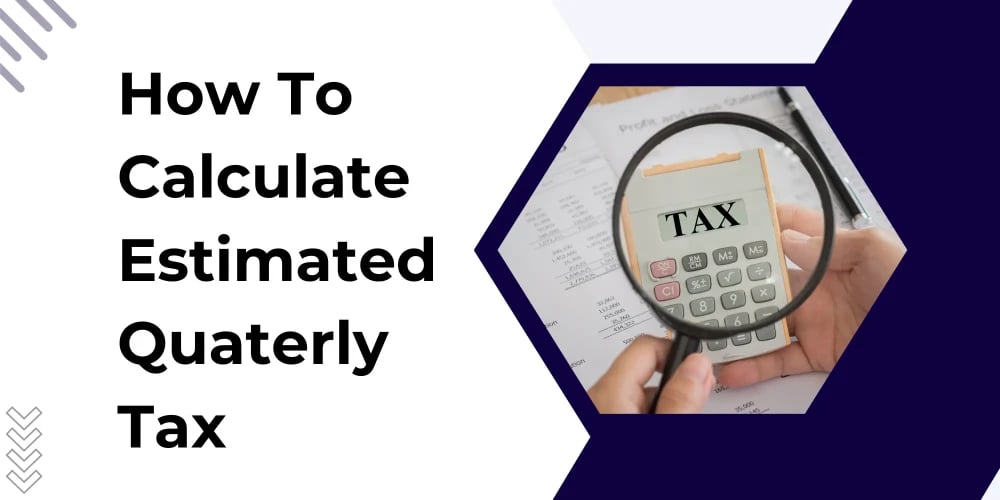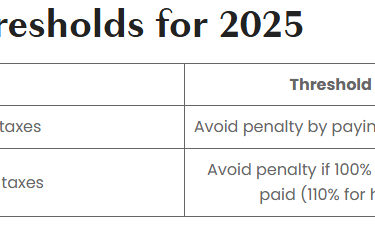Quarterly Tax Dates 2025
What Are The Quarterly Tax
Quarterly taxes are payments made to the IRS throughout the year by individuals or businesses who do not have enough taxes withheld from their income through other means (like a paycheck). These payments are typically required for:
Self-employed individuals (freelancers, contractors)
Small business owners
People with significant investment income
Individuals who do not have enough taxes withheld from other income sources
In the U.S., income taxes are usually paid throughout the year in four quarterly installments based on estimated income. These payments cover both income and self-employment taxes.
Quarterly Tax Deadlines
For individuals who are required to make estimated tax payments, the deadlines are as follows (for 2025):
1st Quarter: April 15, 2025 (for income earned January 1 – March 31)
2nd Quarter: June 15, 2025 (for income earned April 1 – May 31)
3rd Quarter: September 15, 2025 (for income earned June 1 – August 31)
4th Quarter: January 15, 2026 (for income earned September 1 – December 31 of the previous year)
How to Calculate Quarterly Taxes
To calculate your quarterly tax payments, you estimate your expected annual income, tax deductions, and credits, and divide your tax liability by four. You can use IRS Form 1040-ES for guidance calculates your quarterly taxes; you need to estimate your annual tax liability and break it down into four payments. Here's a step-by-step guide to help you calculate your quarterly tax payments:
1. Estimate Your Annual Income
First, you’ll need to estimate your total income for the year. This includes:
Wages or salary
Self-employment income (freelance, business profits)
Investment income (dividends, interest, capital gains)
Rental income
Other sources of income
2. Estimate Your Deductions and Credits
The next step is to estimate the deductions and credits you will claim, which will reduce your taxable income. These might include:
Standard or itemized deductions (e.g., mortgage interest, charitable contributions)
Business expenses (if self-employed)
Tax credits (e.g., Child Tax Credit, Education Credits)
Retirement contributions (like IRA or 401(k))
3. Calculate Your Taxable Income
Subtract your deductions and credits from your total income to determine your taxable income. This is the amount that will be taxed.
Example:
Total income: $80,000
Standard deduction (single filer, 2025): $13,850
Taxable income: $80,000 - $13,850 = $66,150
4. Estimate Your Tax Liability
Use the current year's tax brackets to calculate the amount of taxes owed based on your taxable income. For 2025, the tax brackets might look similar to the following (note that they can change yearly):
Example Tax Brackets (2025):
10% on income up to $11,000
12% on income from $11,001 to $44,725
22% on income from $44,726 to $95,375
And so on...
Using the above brackets, you can calculate the amount of tax you owe for each portion of your income.
Example: For taxable income of $66,150:
First $11,000 taxed at 10% = $1,100
Next $33,725 taxed at 12% = $4,047
Remaining $21,425 taxed at 22% = $4,715.50
Total tax liability: $1,100 + $4,047 + $4,715.50 = $9,862.50
5. Divide Your Tax Liability by 4
Once you have your estimated total tax liability for the year, divide it by 4 to determine how much you should pay each quarter.
Example:
Annual tax liability: $9,862.50
Quarterly payment: $9,862.50 ÷ 4 = $2,465.63 per quarter
6. Adjust for Other Taxes (if applicable)
If you're self-employed, you’ll also need to account for self-employment tax (which includes Social Security and Medicare taxes). The self-employment tax rate is 15.3% of your net self-employment income (12.4% for Social Security and 2.9% for Medicare).
Self-employment tax is calculated on net earnings from self-employment, so subtract business expenses from your gross income.
If applicable, also include any state taxes or local taxes that might affect your quarterly payments.
7. Submit Your Payments
After calculating your quarterly payment, you’ll need to pay it by the IRS due dates (April 15, June 15, September 15, January 15). You can make payments online via the IRS Direct Pay system or by using other IRS payment methods.
Example Calculation Summary:
Total estimated income: $80,000
Deductions: $13,850 (standard deduction)
Taxable income: $66,150
Estimated tax liability: $9,862.50
Quarterly payment: $9,862.50 ÷ 4 = $2,465.63
If you expect your income or deductions to change during the year (e.g., you get a raise, start a new business, or incur large business expenses), you can adjust your quarterly payments accordingly. You can also use IRS Form 1040-ES to help with your calculations.
Why Quarterly Taxes Matter
Quarterly taxes are important for several reasons, especially for self-employed individuals, small business owners, and others who don't have taxes automatically withheld from their income. Here’s why paying quarterly taxes is necessary:
1. Avoid Penalties for Underpayment
The IRS expects you to pay taxes throughout the year as you earn income. If you don’t make timely quarterly payments, you could face penalties and interest for underpayment. These penalties are charged when you owe more than $1,000 in tax after subtracting your withholding and refundable credits. By making quarterly tax payments, you spread the tax burden over the year, helping you avoid large tax bills and potential penalties at tax time.
2. Prevent a Big Tax Bill at Year-End
Paying quarterly taxes helps you avoid having to come up with a large sum of money when you file your tax return. It’s much easier to manage smaller, more frequent payments than one large lump sum.
3. Meet Your Tax Obligations
For many people, especially those who are self-employed or have side gigs, income tax is not automatically withheld from their paychecks. Quarterly tax payments allow you to meet your tax obligations on time and in the correct amounts. This ensures you're complying with tax laws and avoid IRS scrutiny.
4. Cash Flow Management
By dividing your total tax liability into four smaller payments, you can better manage your cash flow throughout the year. It prevents a sudden drain on your resources at the end of the year and gives you a clearer view of how much you need to pay each quarter.
5. Self-Employment Tax
If you're self-employed, you're also responsible for paying self-employment taxes, which include Social Security and Medicare. The total rate for self-employment tax is 15.3%, and it must be paid along with your regular income tax. Quarterly payments help cover both your income tax and self-employment tax obligations.
6. Stay Current on Tax Rates and Deductions
Paying quarterly taxes allows you to stay on top of any changes in your income, deductions, or tax rates throughout the year. If your financial situation changes (such as getting a new job, starting a business, or having a significant increase or decrease in income), you can adjust your quarterly payments accordingly to avoid paying too little or too much.
7. Increase Business Creditworthiness
For business owners, paying taxes on time can help you maintain good financial standing. Consistently making quarterly tax payments shows lenders, investors, or partners that you are responsible and reliable. This can be important if you need financing or if your business is expanding.
8. Peace of Mind
Making regular, smaller payments can provide peace of mind. You don’t have to worry about the stress of coming up with a large amount of money all at once when filing your taxes. It ensures you’re keeping up with your responsibilities and reduces any surprises when tax time comes around.
Summary of Why Quarterly Taxes Matter:
Avoid penalties and interest for underpayment
Prevent a big tax bill at the end of the year
Stay compliant with tax laws and meet obligations
Manage cash flow better
Cover self-employment taxes
Adjust for any changes in income or expenses
Demonstrate financial responsibility for business credit
Regularly paying your quarterly taxes is a smart and proactive way to manage your finances, stay on top of your tax obligations, and avoid any surprises at the end of the year. Let me know if you need more details or help with anything else!




Frequently Asked Questions
1. What happens if I miss a quarterly tax payment?
Missing a payment may result in IRS penalties. However, you can avoid penalties if you pay at least 90% of your total tax liability or match 100% of the previous year’s tax.
2. Can I adjust my quarterly payments?
Yes. If your income changes during the year, you can adjust your payment for the next quarter.
3. Where do I find IRS forms for estimated tax?
You can download IRS Form 1040-ES here.
4. Do I need to file quarterly taxes?
Yes, if you expect to owe $1,000 or more in 2025. This usually applies to self-employed individuals and freelancers.
5. How do I pay my quarterly taxes to the IRS?
You can pay your quarterly taxes through the IRS website using the IRS Direct Pay portal, by mail with Form 1040-ES, or by scheduling an electronic funds transfer (EFT).
6. What if I overpay my quarterly taxes?
If you overpay, the excess can be applied as a credit to your next quarterly payment or refunded when you file your annual tax return.


